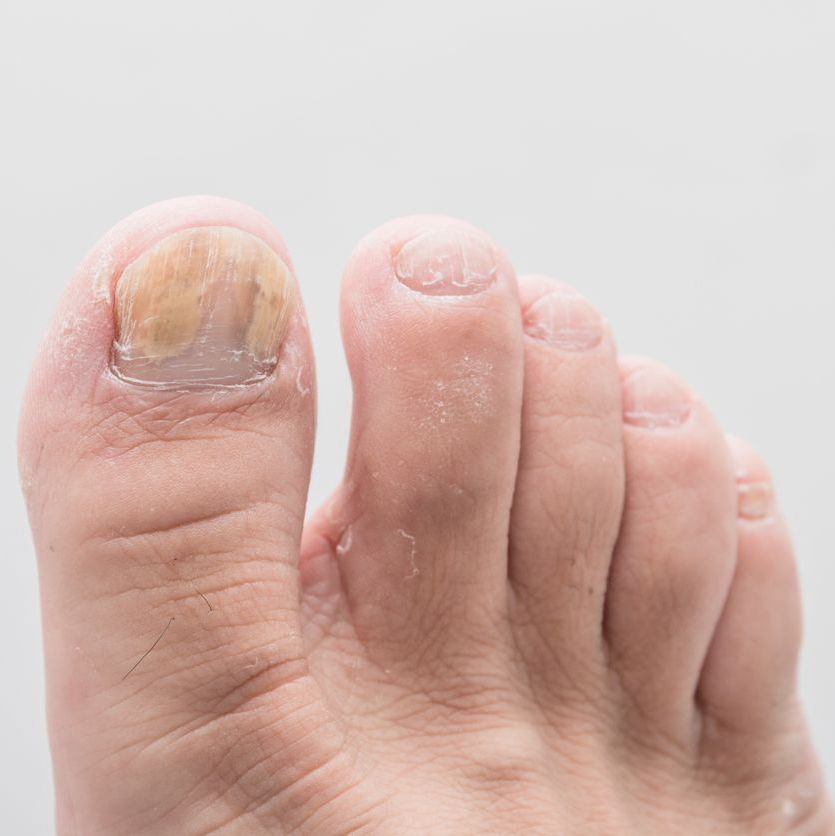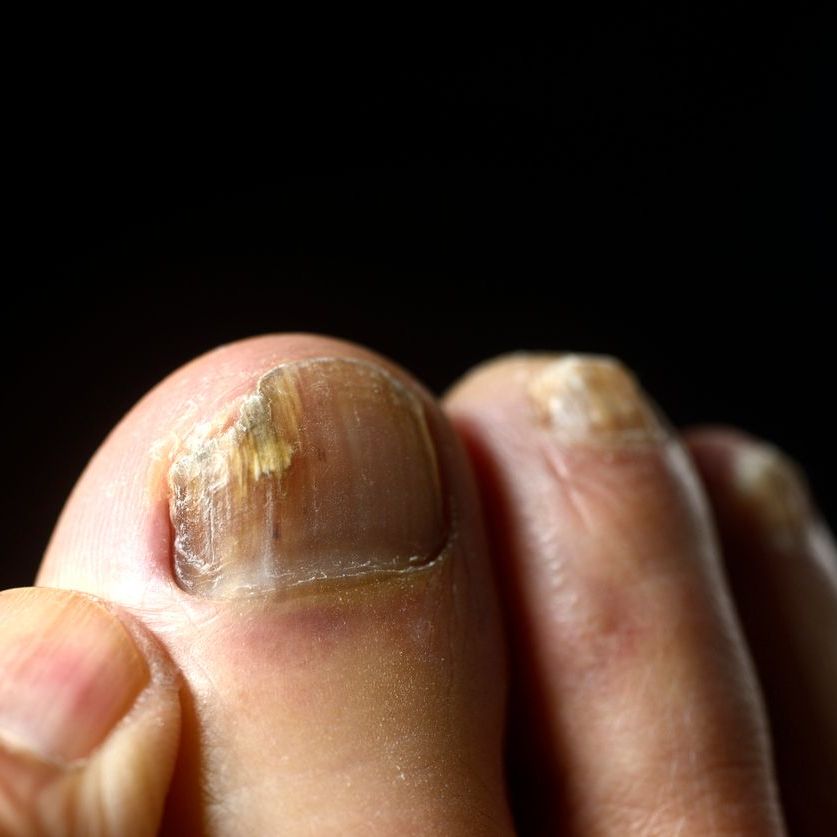If you’ve noticed changes in the appearance of your toenails — such as discoloration, thickening, or pitting — you might be wondering whether you’re dealing with toenail fungus vs psoriasis. These two conditions can look similar, making it difficult to know what’s affecting your nails. While both can cause discomfort and affect your confidence, their treatments differ, so getting the right diagnosis is essential.
What is Toenail Psoriasis?

Psoriasis is a chronic autoimmune condition that affects the skin, causing the body to produce skin cells too quickly. When this process affects the nails, it leads to nail psoriasis. Toenail psoriasis often appears alongside skin psoriasis, particularly on other parts of the body, such as the scalp, elbows, or knees.
The signs of toenail psoriasis can include:
- Pitting: Small dents or depressions on the nail surface.
- Thickening: Nails may become thick and difficult to trim.
- Discoloration: Yellowish or brown patches may develop on the nail.
- Nail lifting: In severe cases, the nail may lift away from the nail bed, a condition known as onycholysis.
- Cracking and Splitting: Nails may become brittle, leading to cracks and splits.
What is Toenail Fungus?

Toenail fungus, or onychomycosis, is a fungal infection that begins beneath the nail and can spread over time. This infection thrives in warm, moist environments and is often associated with sweaty shoes, public showers, or pools. Fungal infections are common and can persist if not treated properly.
Signs of toenail fungus include:
- Yellow or white discoloration: The nail may develop a yellow or white spot that gradually spreads.
- Thickening: The nail becomes thick and hard to trim.
- Brittleness: The nail may become brittle and crumble, especially at the edges.
- Distortion: The nail can become misshapen or grow abnormally.
- Odor: A foul smell may develop as the infection worsens.
Key Differences Between Toenail Psoriasis and Fungus
While both conditions can cause thick, discolored, and unhealthy nails, there are some distinct differences:
- Cause: Toenail psoriasis is caused by an immune system response, while toenail fungus is a result of a fungal infection.
- Appearance: Psoriasis often causes pitting and oil spots (small yellowish patches under the nail), whereas fungus typically leads to yellow or white discoloration and thickening of the nail.
- Nail Lifting: Psoriasis can cause the nail to lift from the nail bed (onycholysis), while fungal infections rarely cause this separation until the condition is advanced.
- Associated Symptoms: Psoriasis is often accompanied by skin changes, such as scaly patches on other areas of the body, whereas toenail fungus usually remains confined to the nails.
Diagnosing Toenail Psoriasis vs. Fungus
Given the similarities between the two conditions, it’s important to seek a professional diagnosis if you notice changes in your toenails. A podiatrist can examine your nails and, if needed, take a sample for lab testing to confirm whether you have a fungal infection or nail psoriasis.
A few diagnostic tools include:
- Physical Examination: Your doctor may identify the condition based on the appearance of your nails and any accompanying skin symptoms.
- Nail Clipping or Scraping: A sample of the nail may be sent to a lab for testing to determine if fungus is present.
- Medical History: If you have a history of psoriasis, this will help guide the diagnosis, as toenail psoriasis is often linked to flare-ups in other parts of the body.
Treatment Options
The treatment for toenail psoriasis and toenail fungus varies significantly, so getting the correct diagnosis is crucial.
Treating Toenail Psoriasis
Treatment for toenail psoriasis focuses on managing symptoms, as there is no cure for the condition. Options include:
- Topical Treatments: Steroid creams or ointments can be applied to the nails to reduce inflammation and improve appearance.
- Systemic Treatments: If psoriasis affects other parts of your body, systemic medications (like biologics) may be prescribed to help control symptoms.
- Nail Care: Keeping your nails trimmed and avoiding trauma to the nails can help prevent worsening of symptoms.
Treating Toenail Fungus
Toenail fungus can be stubborn but is treatable with the right approach:
- Topical Antifungal Treatments: These are applied directly to the nail but may take months to show results.
- Oral Antifungal Medications: These medications work from within the body to clear the infection, typically requiring a longer course of treatment.
- Laser Nail Therapy: This non-invasive option uses light energy to kill the fungus under the nail and offers a quicker, more effective treatment.
- Good Hygiene: Keeping your feet clean and dry, wearing breathable shoes, and avoiding communal areas where fungus thrives can help prevent reinfection.
When to See a Doctor
If you notice changes in the color, texture, or thickness of your toenails, it’s important to consult a podiatrist. Whether you’re dealing with psoriasis or fungus, early diagnosis and treatment can prevent the condition from worsening and help you avoid complications.
At Sheehy Ankle & Foot Center, we offer expert care for both toenail psoriasis and fungal infections. We can provide a thorough evaluation, accurate diagnosis, and personalized treatment plan to restore the health of your nails.
Get Expert Care for Toenail Conditions Today
Whether you’re dealing with toenail psoriasis or a stubborn fungal infection, professional care is key to improving the health and appearance of your nails. Contact Sheehy Ankle & Foot Center today to schedule an appointment. We are here to help you find the right solution for your nail concerns.
